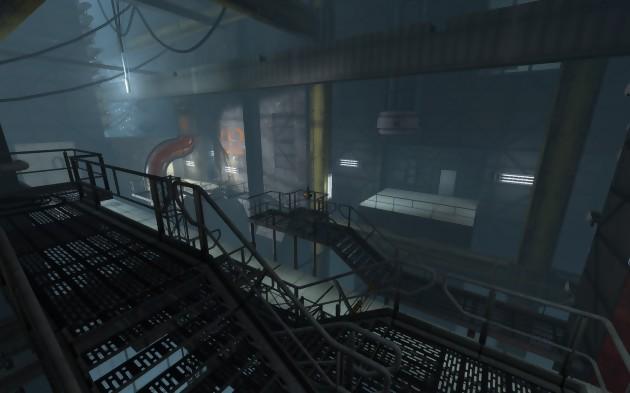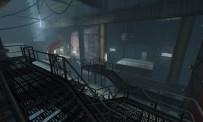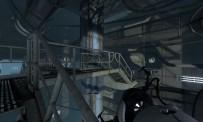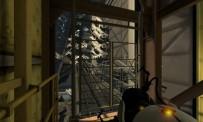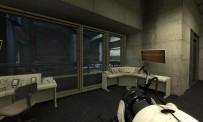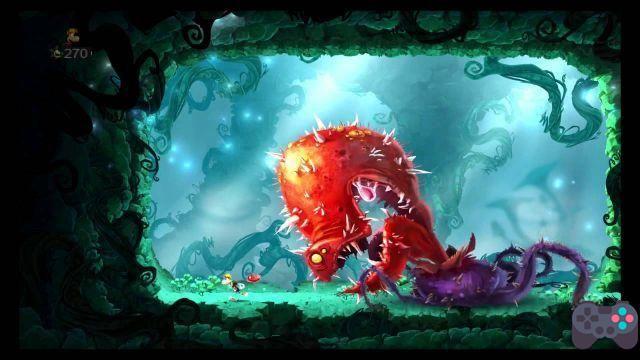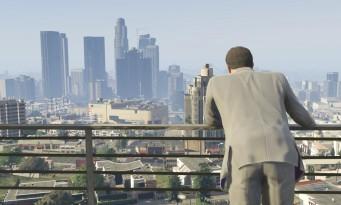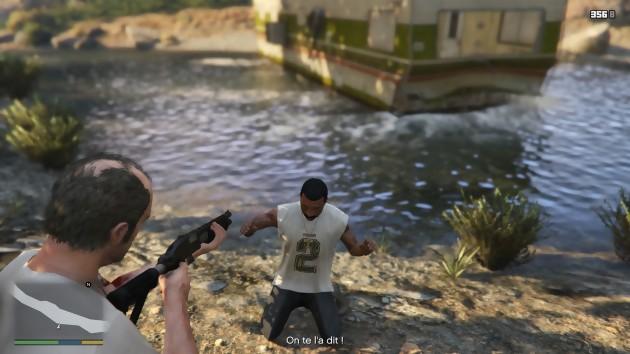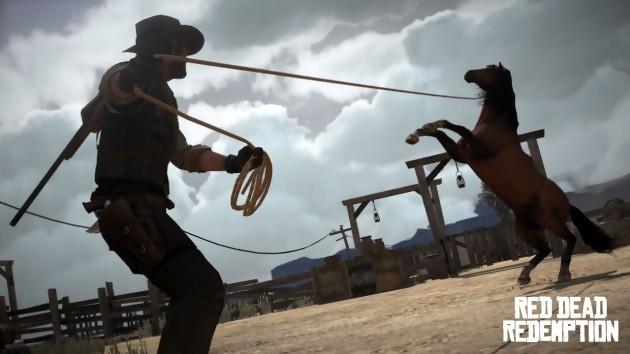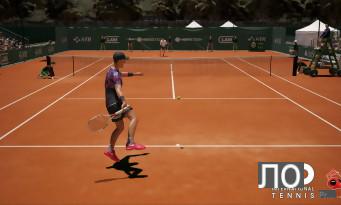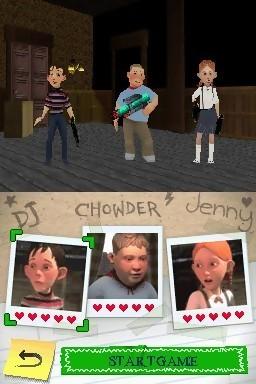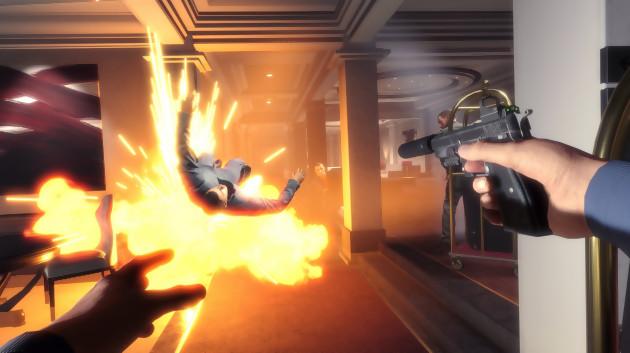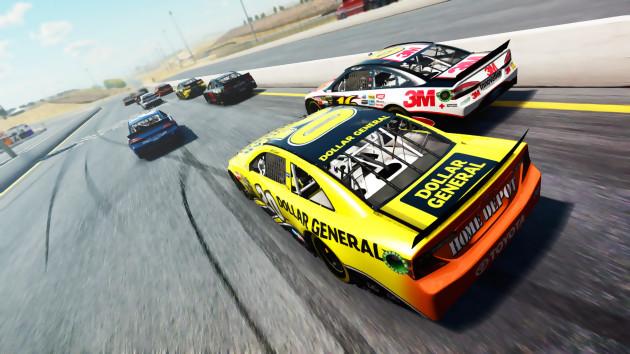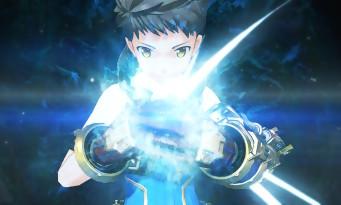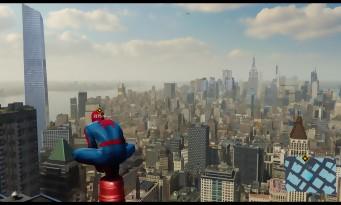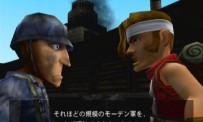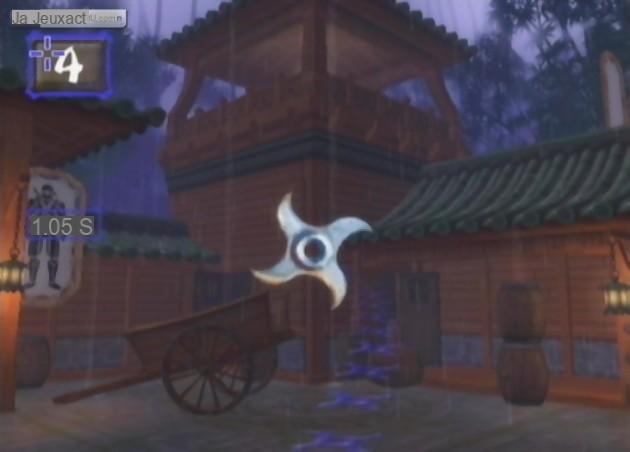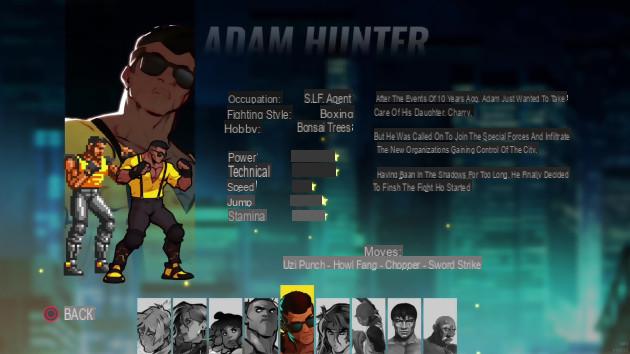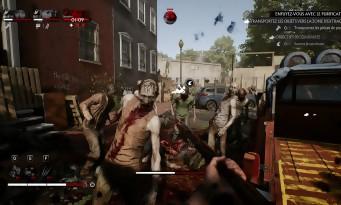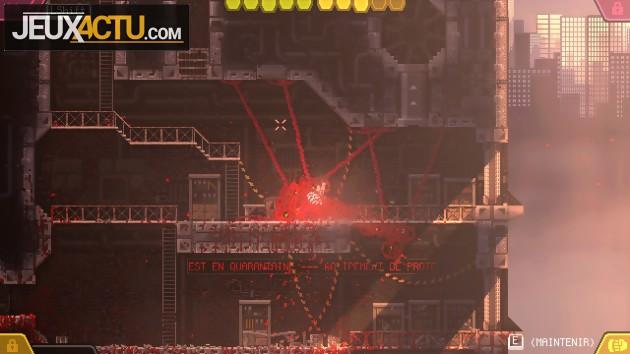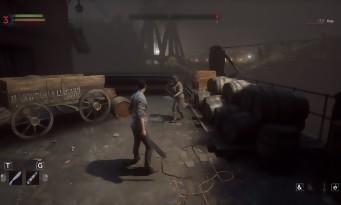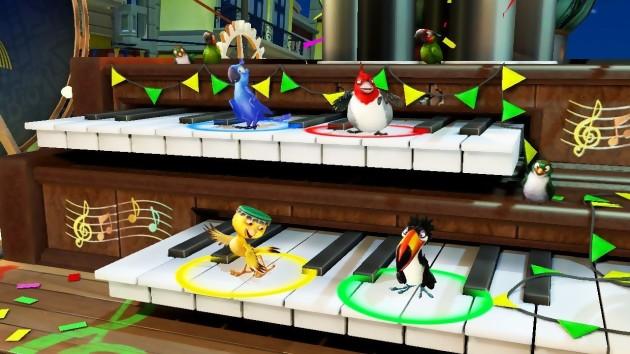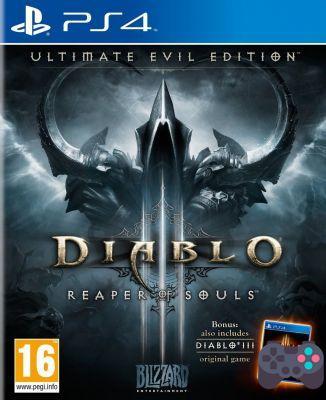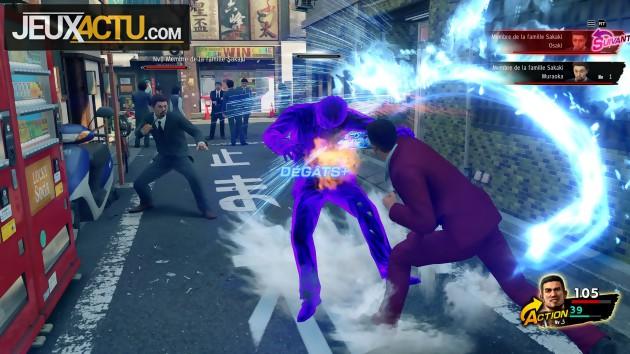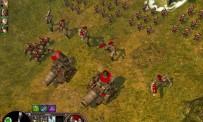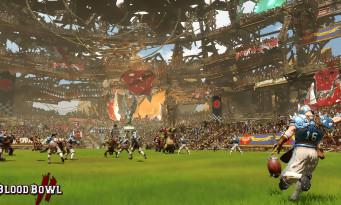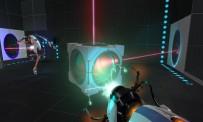 Many, many years have passed since Chell slayed GLaDOS, the robotic and delightfully cynical artificial intelligence that ran the Aperture Science complex. Abandoned since then, it is now in poor condition. Dilapidated halls, crumbling floors, crumbling walls and overgrown areas seem to bear witness to the adage "science without conscience is but ruin of the soul". But following the awakening of Chell, plunged until then in cryostasis, the places quickly become very animated again. Naturally, the terrible GLaDOS also ends up coming to her senses, and the adventures of the two enemy sisters resume with a vengeance. On reading, this postulate may seem somewhat artificial and laid out in a hurry to be able to justify a quickly tinkered sequel. But it is absolutely nothing! Thanks to clever staging as well as the introduction of new characters and enhanced game mechanics, Portal 2 completely avoids the "map-pack" syndrome. If the first rooms crossed are taken from the first episode, it is for two excellent reasons. First of all, to make us understand with subtlety the context of degradation of the places, and, then, to wisely reuse their excellent didactic power, so that new players easily understand the basic concepts of the game. new rooms, often much larger than those of the first episode. We will even see the complex come back to life before our eyes, moving panels and other high-tech devices being perpetually at work to restore, improve and even merge the various test rooms. A few chases behind the scenes of the facilities are also to be expected, even if most of the gameplay still relies on the proper use of teleportation portals, in order to solve puzzles specially concocted for this purpose.
Many, many years have passed since Chell slayed GLaDOS, the robotic and delightfully cynical artificial intelligence that ran the Aperture Science complex. Abandoned since then, it is now in poor condition. Dilapidated halls, crumbling floors, crumbling walls and overgrown areas seem to bear witness to the adage "science without conscience is but ruin of the soul". But following the awakening of Chell, plunged until then in cryostasis, the places quickly become very animated again. Naturally, the terrible GLaDOS also ends up coming to her senses, and the adventures of the two enemy sisters resume with a vengeance. On reading, this postulate may seem somewhat artificial and laid out in a hurry to be able to justify a quickly tinkered sequel. But it is absolutely nothing! Thanks to clever staging as well as the introduction of new characters and enhanced game mechanics, Portal 2 completely avoids the "map-pack" syndrome. If the first rooms crossed are taken from the first episode, it is for two excellent reasons. First of all, to make us understand with subtlety the context of degradation of the places, and, then, to wisely reuse their excellent didactic power, so that new players easily understand the basic concepts of the game. new rooms, often much larger than those of the first episode. We will even see the complex come back to life before our eyes, moving panels and other high-tech devices being perpetually at work to restore, improve and even merge the various test rooms. A few chases behind the scenes of the facilities are also to be expected, even if most of the gameplay still relies on the proper use of teleportation portals, in order to solve puzzles specially concocted for this purpose.
As funny as it is smart
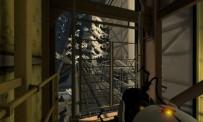 As simple as it is effective, the basic concept is based on the Portal Gun, capable of firing an entry portal and an exit portal on certain surfaces. Since the two communicate, we must use it to pass certain otherwise insurmountable obstacles and reach the exit of each level more or less easily. New devices enrich the game experience, including laser beams (which advantageously replace the too slow energy balls of the first part), propulsion platforms, light bridges, transport tunnels, repellent gel blue (for bouncing off surfaces previously painted with it), orange speed-up gel (for speeding up) and a handy strong white gel, which makes any surface suitable for creating portals. All of these possibilities really open up new horizons, both for the developers, who have concocted more complex puzzles, and for the players, who have a richer range to solve them. We then touch on one of the great strengths of the game: a level design of madness in the service of a perfect management of the difficulty. Although we are dealing with a game that is now openly cross-platform, the developers never take players for fools. Unlike many FPS, which multiply to the point of nausea the indications of help on the screen, Portal 2 never takes us roughly by the hand. The architecture of the levels and the staging are enough to give us all the clues necessary to progress. Each new puzzle is an opportunity for a new little miracle, which consists of offering a real intellectual challenge to the player without ever causing him the slightest frustration. Even when you block for several minutes on a passage, you never get angry because, as tricky as it is, you know that the design of the level is not at fault. Thinking calmly and carefully observing the scene is always enough to overcome the puzzles, which almost never rely on pure skill or the speed of execution of movements and shots.
As simple as it is effective, the basic concept is based on the Portal Gun, capable of firing an entry portal and an exit portal on certain surfaces. Since the two communicate, we must use it to pass certain otherwise insurmountable obstacles and reach the exit of each level more or less easily. New devices enrich the game experience, including laser beams (which advantageously replace the too slow energy balls of the first part), propulsion platforms, light bridges, transport tunnels, repellent gel blue (for bouncing off surfaces previously painted with it), orange speed-up gel (for speeding up) and a handy strong white gel, which makes any surface suitable for creating portals. All of these possibilities really open up new horizons, both for the developers, who have concocted more complex puzzles, and for the players, who have a richer range to solve them. We then touch on one of the great strengths of the game: a level design of madness in the service of a perfect management of the difficulty. Although we are dealing with a game that is now openly cross-platform, the developers never take players for fools. Unlike many FPS, which multiply to the point of nausea the indications of help on the screen, Portal 2 never takes us roughly by the hand. The architecture of the levels and the staging are enough to give us all the clues necessary to progress. Each new puzzle is an opportunity for a new little miracle, which consists of offering a real intellectual challenge to the player without ever causing him the slightest frustration. Even when you block for several minutes on a passage, you never get angry because, as tricky as it is, you know that the design of the level is not at fault. Thinking calmly and carefully observing the scene is always enough to overcome the puzzles, which almost never rely on pure skill or the speed of execution of movements and shots.
Unlike many FPS, which multiply to the point of nausea the indications of help on the screen, Portal 2 never takes us roughly by the hand. The architecture of the levels and the staging are enough to give us all the clues necessary to progress."
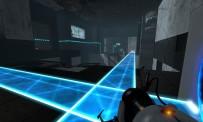 Like its predecessor, Portal 2 is also a great game in that it goes far beyond the framework of a simple puzzle-game. The pleasure of solving the puzzles is systematically added to the comments of the different characters, each more hilarious than the other. The combination of these two aspects offers us real moments of euphoria, as well as a string of hard-hitting dialogues and hilarious situations, which will be remembered for a long time. The main newcomer, Wheatley, is usually no stranger to it. This robotic ball, similar in shape to those that detach from GLaDOS in the final battle of Portal, has a strong sympathy capital. Thanks to his endearing stupidity, his propensity to make blunders and his well-felt replies, of course, but also thanks to his expressiveness. Because like the Pixar studio, capable of conveying emotion via a clownfish or a simple car, Valve obviously has extremely talented animators in its pocket. The studio also knows how to call on quality actors, capable of transforming simple security turrets into terribly human characters. Moreover, the original version as the French version are real gems. Everything sounds right, the most subtle intonations are correctly rendered and, in the end, even the French dubbers really live up to the finesse of the dialogues. In short, here is a location which we would like to serve as a model for many games... The excellence of the soundtrack is also due to the electronic music, which skilfully punctuates the highlights of the adventure. Only disappointment on this subject: the song of the final credits is really not up to the "Still Alive" of the first episode. Since we are talking about the few annoying points, let's point out that the game is not superb on consoles, because it sometimes uses textures that seem to date from Half-Life 2 and suffers from strong aliasing (especially on Xbox 360) . We can also regret that there is no big reference to the Half-Life universe, only Black Mesa being barely mentioned here or there. But all of this remains anecdotal. The game's only real flaw comes from the drop in revs that occurs in Chapter Six. The atmosphere then changes radically (we won't tell you why here in order not to spoil it), reminds a little too much of that of Bioshock, and becomes more gloomy and narrative, even though the rhythm of the five previous chapters was going crescendo. Fortunately, we find the dynamism and the atmosphere that characterize Portal from chapter eight. The game has ten and ultimately offers a very honest lifespan. This obviously depends on your sagacity, but it will generally take between eight and twelve hours before reaching the final sequence. And that, not to mention the cooperative mode...
Like its predecessor, Portal 2 is also a great game in that it goes far beyond the framework of a simple puzzle-game. The pleasure of solving the puzzles is systematically added to the comments of the different characters, each more hilarious than the other. The combination of these two aspects offers us real moments of euphoria, as well as a string of hard-hitting dialogues and hilarious situations, which will be remembered for a long time. The main newcomer, Wheatley, is usually no stranger to it. This robotic ball, similar in shape to those that detach from GLaDOS in the final battle of Portal, has a strong sympathy capital. Thanks to his endearing stupidity, his propensity to make blunders and his well-felt replies, of course, but also thanks to his expressiveness. Because like the Pixar studio, capable of conveying emotion via a clownfish or a simple car, Valve obviously has extremely talented animators in its pocket. The studio also knows how to call on quality actors, capable of transforming simple security turrets into terribly human characters. Moreover, the original version as the French version are real gems. Everything sounds right, the most subtle intonations are correctly rendered and, in the end, even the French dubbers really live up to the finesse of the dialogues. In short, here is a location which we would like to serve as a model for many games... The excellence of the soundtrack is also due to the electronic music, which skilfully punctuates the highlights of the adventure. Only disappointment on this subject: the song of the final credits is really not up to the "Still Alive" of the first episode. Since we are talking about the few annoying points, let's point out that the game is not superb on consoles, because it sometimes uses textures that seem to date from Half-Life 2 and suffers from strong aliasing (especially on Xbox 360) . We can also regret that there is no big reference to the Half-Life universe, only Black Mesa being barely mentioned here or there. But all of this remains anecdotal. The game's only real flaw comes from the drop in revs that occurs in Chapter Six. The atmosphere then changes radically (we won't tell you why here in order not to spoil it), reminds a little too much of that of Bioshock, and becomes more gloomy and narrative, even though the rhythm of the five previous chapters was going crescendo. Fortunately, we find the dynamism and the atmosphere that characterize Portal from chapter eight. The game has ten and ultimately offers a very honest lifespan. This obviously depends on your sagacity, but it will generally take between eight and twelve hours before reaching the final sequence. And that, not to mention the cooperative mode...
whims for two
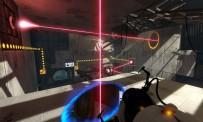 Indeed, it is no longer a secret for a long time, Portal 2 has a coop mode. And what could only have been a nice bonus or a simple additional selling point finally turns out to be much more than that. In fact, this mode could almost justify the purchase of the game on its own! First of all, because it is really hearty. It is even more difficult to estimate the lifespan than in solo since it depends this time on the combined efficiency of two brains and not just one, but we can count on around six hours. On the other hand, the atmosphere is perfectly up to that of the single-player campaign. The two robots that we embody, P-body the big orange one and Atlas the little blue one, are also very expressive and endearing. And above all, the sarcastic comments of GLaDOS are still in the game. Our favorite AI does not hesitate to chamber one of the players to the detriment of the other, or to distribute good points when one of them causes the death of his teammate. Once again, we think while having fun, and vice versa. In addition, the four-portal gameplay in turn enriches the range of possibilities. Still as well done, the level design does not hesitate to exploit them all and does not hesitate to make us question our usual strategies. Thus, it is sometimes necessary to pass a cube from one character to another, to carry out certain actions in a synchronized manner, or even to think of borrowing the portals of the other. It is therefore imperative to think together to get out of certain situations, and the pleasure of success is increased tenfold. Finally, the developers have planned everything so that the experience is the best possible, even when the two players are physically separated. To overcome the inevitable "but place your portal there!" that wouldn't make much sense online, a scoring tool has been integrated. One can thus easily designate a specific place to one's partner, without having to describe it awkwardly orally. Better yet, a picture in picture function allows you to display at any time in a corner of the screen what our friend sees. The list of available tools also includes a system of gestures, fun (like MMORPG emotes) or more useful (triggering a small countdown to easily synchronize actions). In the end: in solo as in coop, Portal 2 leaves absolutely unforgettable memories and stands out admirably from the crowd. Simply an exceptional game.
Indeed, it is no longer a secret for a long time, Portal 2 has a coop mode. And what could only have been a nice bonus or a simple additional selling point finally turns out to be much more than that. In fact, this mode could almost justify the purchase of the game on its own! First of all, because it is really hearty. It is even more difficult to estimate the lifespan than in solo since it depends this time on the combined efficiency of two brains and not just one, but we can count on around six hours. On the other hand, the atmosphere is perfectly up to that of the single-player campaign. The two robots that we embody, P-body the big orange one and Atlas the little blue one, are also very expressive and endearing. And above all, the sarcastic comments of GLaDOS are still in the game. Our favorite AI does not hesitate to chamber one of the players to the detriment of the other, or to distribute good points when one of them causes the death of his teammate. Once again, we think while having fun, and vice versa. In addition, the four-portal gameplay in turn enriches the range of possibilities. Still as well done, the level design does not hesitate to exploit them all and does not hesitate to make us question our usual strategies. Thus, it is sometimes necessary to pass a cube from one character to another, to carry out certain actions in a synchronized manner, or even to think of borrowing the portals of the other. It is therefore imperative to think together to get out of certain situations, and the pleasure of success is increased tenfold. Finally, the developers have planned everything so that the experience is the best possible, even when the two players are physically separated. To overcome the inevitable "but place your portal there!" that wouldn't make much sense online, a scoring tool has been integrated. One can thus easily designate a specific place to one's partner, without having to describe it awkwardly orally. Better yet, a picture in picture function allows you to display at any time in a corner of the screen what our friend sees. The list of available tools also includes a system of gestures, fun (like MMORPG emotes) or more useful (triggering a small countdown to easily synchronize actions). In the end: in solo as in coop, Portal 2 leaves absolutely unforgettable memories and stands out admirably from the crowd. Simply an exceptional game.
